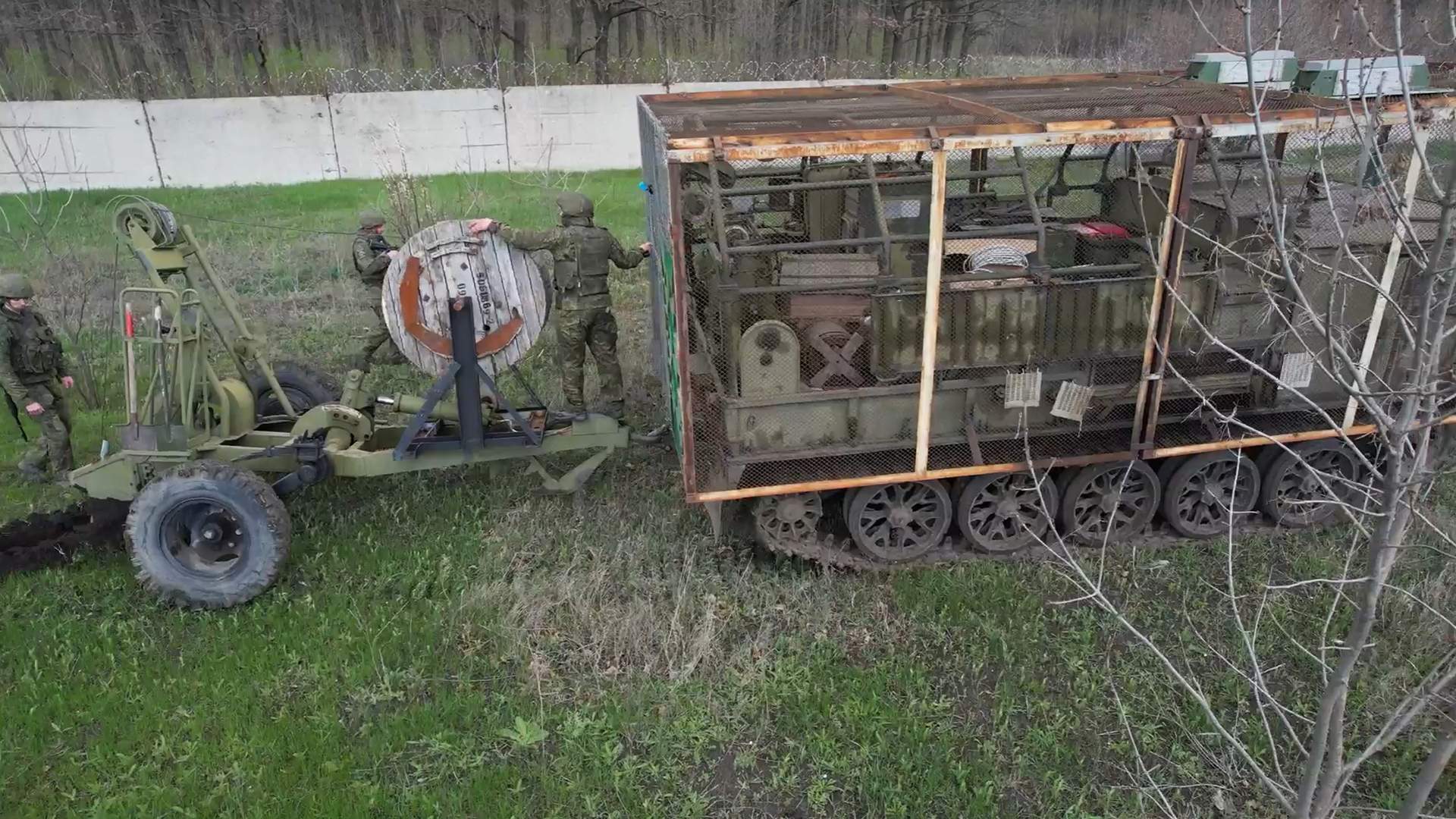Dangerous communication: how fiber-optic lines are laid in a special operation zone

In modern conditions, the role of communications on the battlefield is extremely important. The management of troops and, ultimately, the fulfillment of combat missions directly depend on the quality, reliability and stability of communication channels. How the communications officers of the Center group ensure uninterrupted digital communications in the special operation zone — in the Izvestia article.
Field repairs
Sergeant Alexander Krasnikov is on duty at the control point. His task is to constantly monitor the network, set up equipment and ensure communication between departments. In case of a malfunction, he gives the command to the task force to leave. Alexander says that the network is very reliable, but there is always a possibility of damage due to shelling.
— Due to the fact that the network is deployed near the front line, there is a danger for repairmen every day. A group of protection against FPV drones and other emergency situations always leaves with the task force," says Sergeant Krasnikov.
Fiber-optic lines help ensure secure video and voice communications. Alexander Krasnikov explains that this became possible due to the rapid introduction of technologies previously used by civilian communications specialists and their combination with military developments.
— In 2022, I came to the decision that I might be needed in the military, because I had a lot of experience. I was a communications engineer at a large telecommunications company," says Sergeant Krasnikov about how he joined the army. In the service, he was able to share his knowledge, although he had to adapt to the combat situation. Civilian colleagues not only supported Alexander's decision, but also helped him at the first stages with technical advice, and then with humanitarian assistance with specific equipment.
An emergency group goes to the repair site on a buggy, the repairmen are accompanied by a sapper. Fighters with toolboxes and a large set of special tools deploy near the found cliff, and the car is hidden from possible detection from the air.
Captain Konstantin Okhotnikov, commander of the linear task force, explains how the work is going. Backup lines are switched on during the repair, and the necessary specialists are deployed to the break point.
— Since our lines are optical, the staff is trained to work with special tools. Welding equipment for optics, reflectometers, and track detectors are all in our arsenal,— explains Captain Okhotnikov.
During the offensive, the linear groups accompany the troops and organize the supply of communications as close as possible. Today, these are also fiber-optic lines.
— If optics were no longer a novelty in the civilian sphere, then from 2022 the communications forces also realized the need to lay such lines for the operation of powerful channels. Therefore, the personnel were promptly trained, and the people are coping," says Captain Okhotnikov.
Establish a connection
We are watching the work on laying new lines in the group of Captain Nikita Krasyukov. Signalmen are preparing a cable laying machine based on an armored MT-LB tractor, which has been upgraded to work with optical fiber instead of telephone wire. The tractor itself is covered with anti-drone nets and electronic warfare equipment. An engineering survey with metal detectors and probes is underway in front of the car.
— The laying machine is capable of laying any type of cable. But the main thing today is fiber—optic lines for various departments. A lot of new things are starting to be applied here, we are learning something from our elders, and even from the young ones who come from college and transmit information," explains Nikita Krasyukov. He graduated from the Academy of Communications in 2023.
He and his fighters laid lines in the Avdiivka and Pokrovsky directions, including under the blows of enemy drones.
— A cable was laid in the Pokrovsky direction on a clear day. At one point, a large number of drones began to appear, and the enemy's artillery began to finish them off. We had to lay a little bit, about a kilometer, of cable to the nearest connecting well. The FPV crashed nearby several times, but we connected the cable to the well and then evacuated,— Nikita Krasyukov tells about one of the memorable episodes.
The captain calls a fighter with a 16-caliber rifle and shows us how he is equipped to defend against kamikaze drones. The drone driver turns out to be the welder of the group, and he explains that the moment the cable is laid, he starts his work and passes the gun to other comrades.
— Fiber welding will not work quickly, it must be done carefully. That's why everyone protects me during welding. We have to do it as quickly as possible, I've already got the hang of it, but it still takes us an hour to weld a reliable joint," explains Oleg Chikunov, a welder at the communications company.
Before mobilization, he served in the army and the police, and then worked as an electrician. He mastered both his military specialties — drone fighter and fiber optic work - in the military, as he himself says, in practice.
Переведено сервисом «Яндекс Переводчик»






